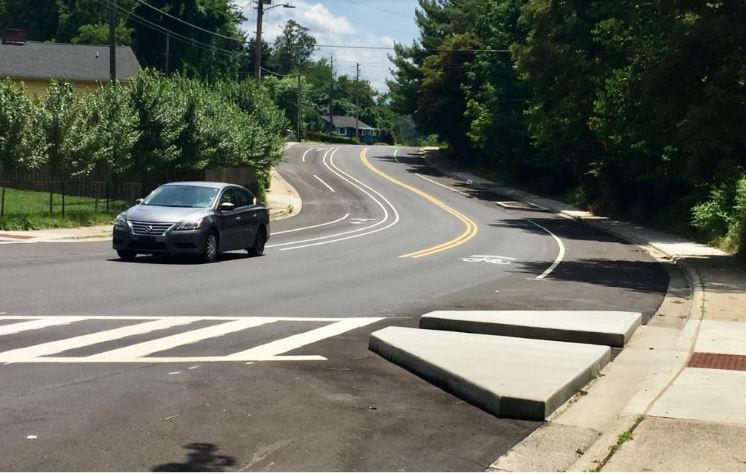Update
The City of Asheville joined with the East End/Valley Street Neighborhood Association July 14 for a ribbon cutting to celebrate the completion of one of the City’s first big bond projects — the resurfacing of Martin Luther King Jr. Drive.
Original story
Everyone is welcome to join City officials, staff and members of the neighborhood for the celebration at 9 a.m. July 14 at Martin Luther King Jr. Park, 50 Martin Luther King Jr. Drive.
The bond-funded Martin Luther King Jr. Drive project cost $2.5 million, including sidewalks, stormwater improvements and other infrastructure.
“The project was on schedule and is making a difference for this community,” said Public Works Director Greg Shuler. “It is a structurally sound street now with traffic calming features, bike lanes and bulb-out curb extensions.”
MLK Jr. Drive is what is considered a “complete street,” in that it has places for pedestrians, motorists and bike lanes for bicyclists. In pre-construction planning meetings with City staff, neighborhood residents were helpful in working with the City to identify new crosswalk opportunities for this bond project.
“Members of the neighborhood offered suggestions that enhanced safety and generally made this project more practical for the community,” said Shuler.
“The community has been great to work with,” said Streets Division Manager Chad Bandy.
We invite everyone to drive up Martin Luther King Jr. Drive to see this newly completed Transportation bond project.
More bond projects to come
The $74 million in bonds approved by voters in 2016 includes projects categorized in three areas: parks ($17 million), affordable housing ($25 million) and transportation ($32 million).
Of $74 million allocated by voters for budget improvement projects, the City has so far spent $8.4 million in planning, design and construction. The City has seven years to complete the bond-approved projects.
“The first couple of years was spent, mainly, doing the planning and design portion of the projects,” said Capital Projects Manager Jade Dundas.
From planning, projects move to design process before they can move into construction phase.
“The construction phase is where you see most of the money spent,” said Dundas. “We are working diligently to advance these projects.”
That includes work going on now on park playgrounds and outdoor courts. Beverly Road resurfacing was also recently completed.
With the bond project to be completed by 2023, residents will see the most construction during the middle years, said Dundas. His goal is to have only a few projects still in the works by 2022-2023. “Some of this will depend on contractor availability,” he noted.
Improved bond reporting tool
After the bonds were passed in November 2016, the City launched a Bond Projects Information webpage in January 2017 to help residents track projects and spending.
One of the most helpful tools on the webpage is the Dashboard for Bond and CIP Projects, a place where residents can sort by category, such as all bond projects or capital improvement projects (CIP), or by topic such as transportation, affordable housing and parks.
A new tab has recently been added to the reporting dashboard giving larger visibility to how much has been spent. Also look for the “under contract” tab that has added to the site.
How bonds work
Issuing bonds is a common way for cities to invest in community infrastructure. A bond referendum is a vote by the electorate to authorize the City to issue bonds to generate revenue for a specific project or projects.
Asheville’s voter-approved bond program provides the City more options to invest in infrastructure to meet the needs of Asheville’s rapidly growing population.
